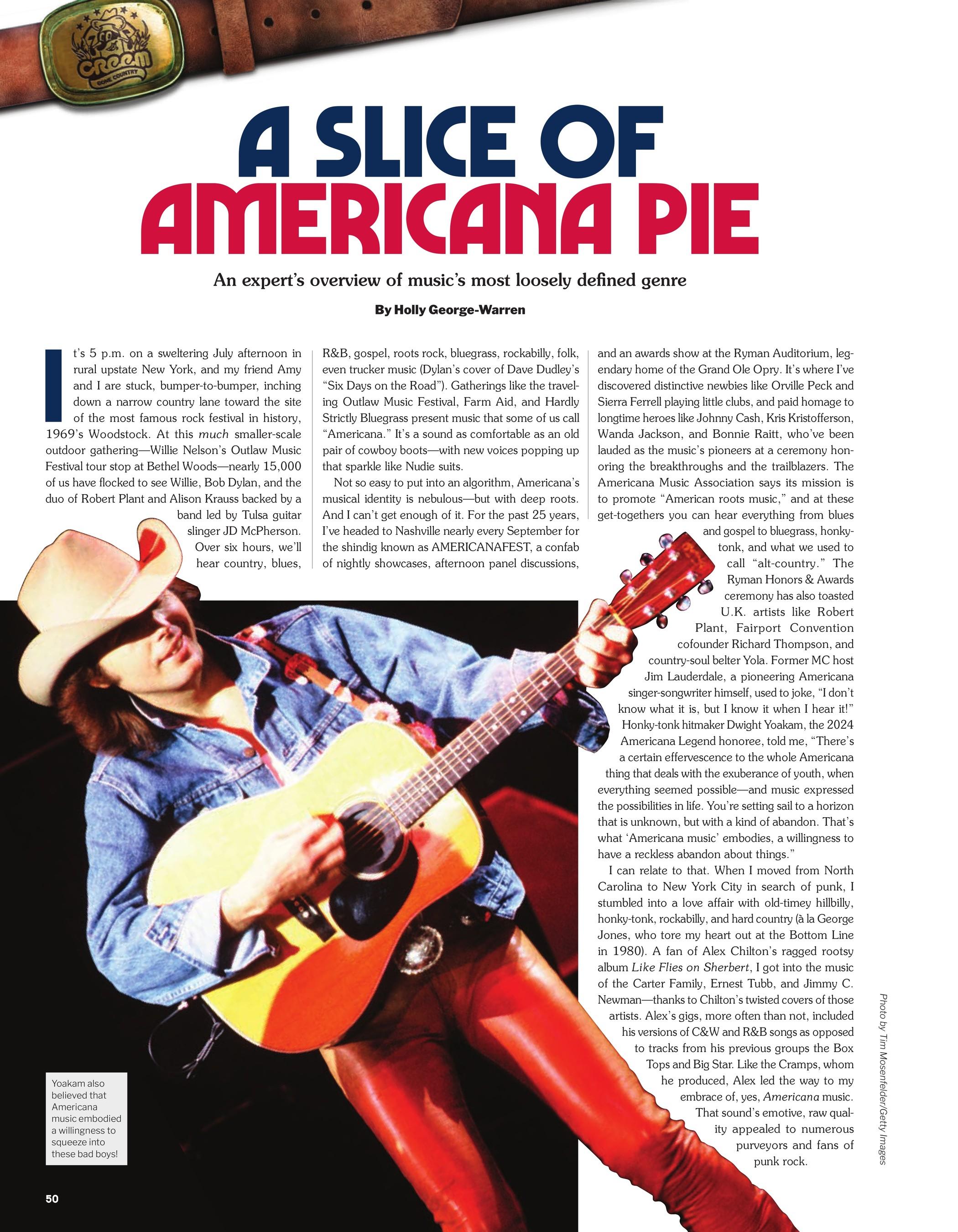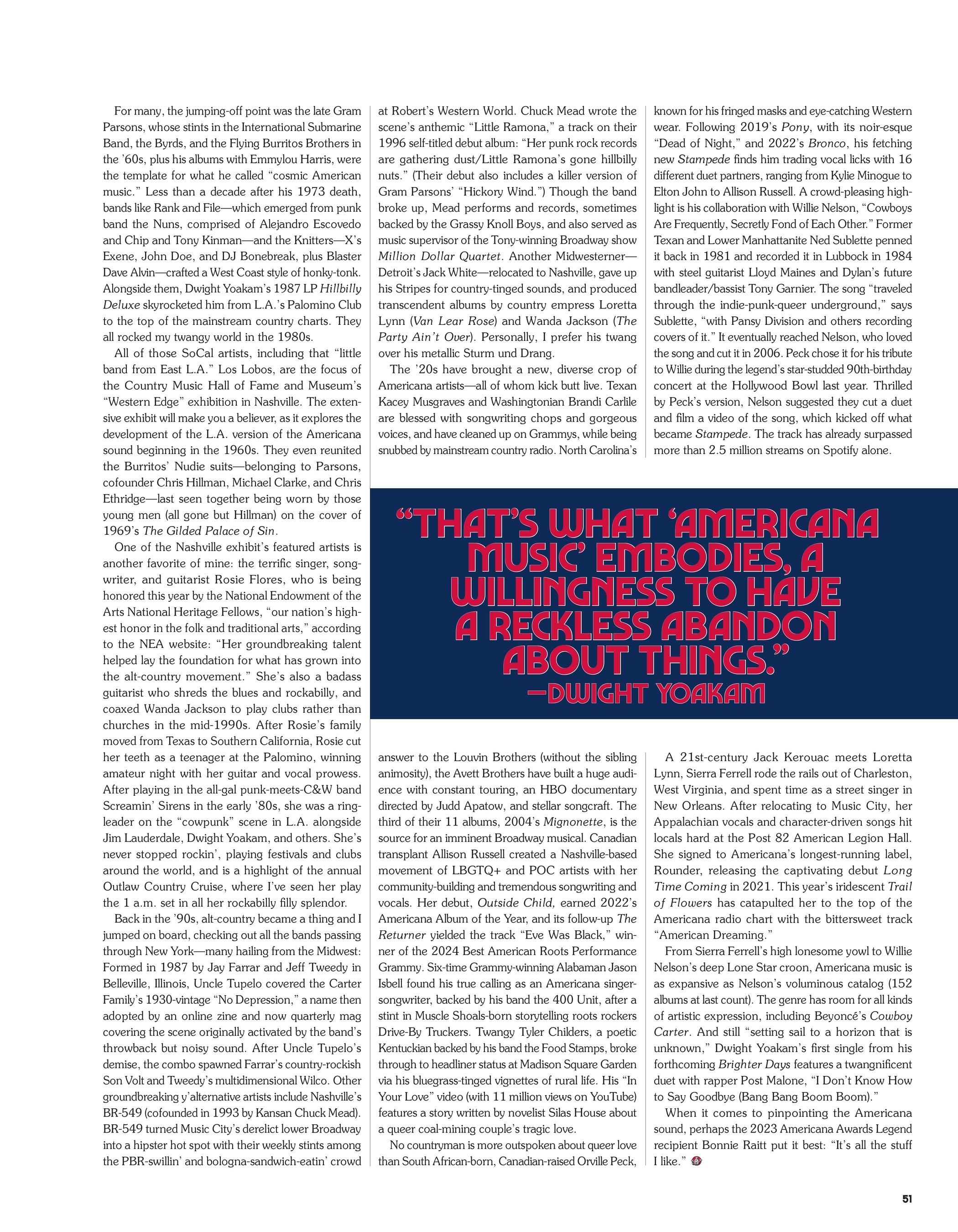A SLICE OF AMERICANA PIE
An expert’s overview of music’s most loosely defined genre


It’s 5 p.m. on a sweltering July afternoon in rural upstate New York, and my friend Amy and I are stuck, bumper-to-bumper, inching down a narrow country lane toward the site of the most famous rock festival in history, 1969’s Woodstock. At this much smaller-scale outdoor gathering—Willie Nelson’s Outlaw Music Festival tour stop at Bethel Woods—nearly 15,000 of us have flocked to see Willie, Bob Dylan, and the duo of Robert Plant and Alison Krauss backed by a band led by Tulsa guitar slinger JD McPherson. Over six hours, we’ll hear country, blues, R&B, gospel, roots rock, bluegrass, rockabilly, folk, even trucker music (Dylan’s cover of Dave Dudley’s “Six Days on the Road”). Gatherings like the traveling Outlaw Music Festival, Farm Aid, and Hardly Strictly Bluegrass present music that some of us call “Americana.” It’s a sound as comfortable as an old pair of cowboy boots—with new voices popping up that sparkle like Nudie suits.

